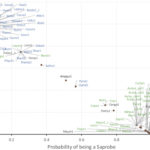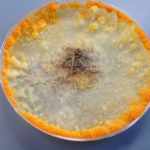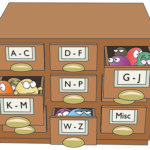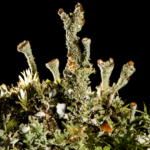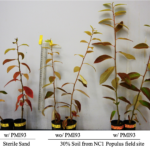A team led by JGI researchers has generated a more accurate phylogenetic tree tracking the evolution of Dothideomycetes fungi. This work was enabled in part through JGI’s Community Science Program (CSP), as several approved proposals have contributed toward filling gaps on the fungal Tree of Life, including the 1000 Fungal Genomes Project. Researchers had access to over 100 Dothideomycetes genomes, just enough of a sample size to test if a computer algorithm could distinguish between fungal lifestyles of saprobes and pathogens based on the data provided. The work appeared in the June issue of Studies in Mycology. The work appeared in the June issue of Studies in Mycology. Read more on the JGI website.
JGI Enables Study on How Filamentous Fungi Sense Food
Filamentous fungi are like handymen who show up at a job site for a task that requires a flathead screwdriver with a full toolbox including Phillips and specialty screwdrivers, not to mention Allen wrenches. The fungi are similarly armed with a variety of PCWDEs to first break down the components of plant cell walls, which range from simple to complex carbohydrates, and then convert them into simple sugars. When faced with a veritable buffet of carbon sources, these fungi detect which complex chains are available; this information triggers pathways to determine which enzymes should be deployed in what order to most efficiently degrade the plant biomass.
JGI Scientists Pen Genome Watch Articles
Tanja Woyke and other JGI researchers made their debut writing for a column of the prestigious scientific research magazine Nature Reviews Microbiology last year — and there’s more to come in 2020. In 2018, Woyke received a message from Andrea Du Toit, senior editor for Nature Reviews Microbiology, with an unusual opportunity: would JGI researchers consider regularly writing for the magazine’s column Genome Watch? The column appears in six issues of the monthly magazine each year.
Du Toit invited JGI to write half of the 2019 Genome Watch articles as a way to expose readers to a broader genomics perspective. Woyke spread the word among her JGI colleagues, and they agreed, providing three articles for the journal with Du Toit as their editor. The partnership has proven so successful this year, JGI is providing another three Genome Watch articles. Go here to read the blog post on the JGI website.
JGI Helps Illuminate Microbial Partnership In Lichen
The humble lichen is a superorganism: one being that is actually comprised of two major participants. One partner is a fungus; the other is a photosynthetic microbe, tucked in the fungus’ tissue. The two live intertwined, with the photobiont transferring part of its photosynthetically fixed carbon to the mycobiont — a strategy that has worked so well, that lichen are the dominant carbon and nitrogen fixers alpine and high latitude systems. However, despite a century-and-a-half of lichen research, many of the symbiosis’ details remain unclear. For the first time, a team has analyzed in parallel the genomes and transcriptomes of both partners to better understand lichen. Read the science highlight on the JGI website.
JGI Helps Illuminate How a Fungus Fuels Tree Growth
The fungus Mortierella elongata enjoys a close association with the fast-growing poplar tree (Populus trichocarpa), a potential biofuel feedstock. Scientists routinely spot the fungus near the tree or in between its root cells. To better understand their relationship, a team of scientists has studied the effect of the fungus on the tree’s physical traits and gene expression, finding the fungus induces some notable metabolic changes. Click here to read the science highlight on the JGI website.
Was this page useful?


